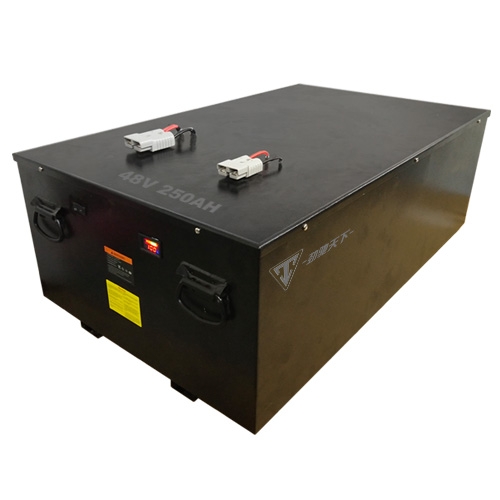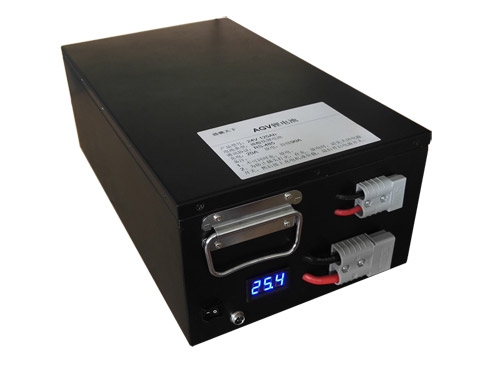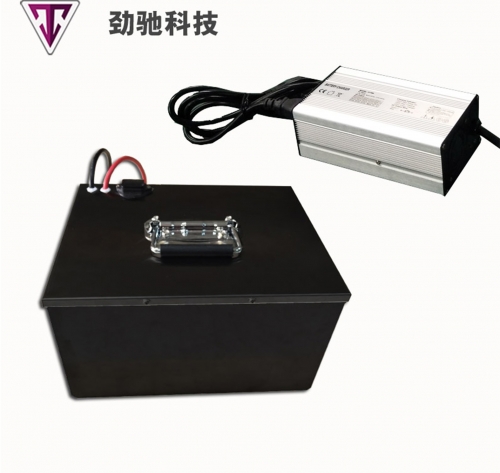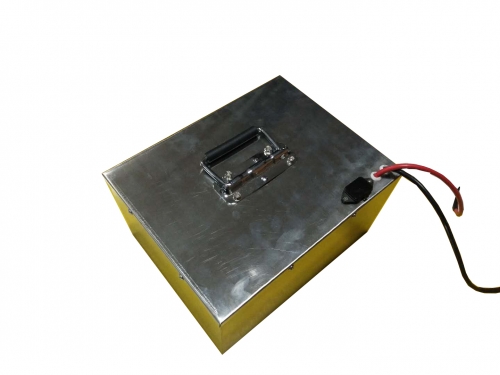Lithium is a particularly reactive metal element with a silvery-white appearance, very soft, stretchable, and flammable. Metallic lithium is a substance that releases flammable gas when it comes into contact with water. If it is not handled properly, it can easily cause an explosion, so you must pay attention to its properties when using lithium electronics.
1. Working principle of AGV lithium battery
The lithium battery commonly referred to at present refers specifically to the lithium-ion battery, whose positive and negative electrodes are composed of different lithium-ion embedded compounds. It is a device that realizes the mutual conversion of chemical energy and electrical energy. Its structure is mainly composed of the positive and negative electrodes of the battery, as shown below.
When the AGV lithium battery is in the process of charging, the current sent by the charger exerts a thrust on the lithium ions (Li+), which pass through the electrolyte from the positive electrode to the negative electrode and are stored in the form of electrochemical energy. When no more lithium ions flow from the positive electrode to the negative electrode, it means that the battery is fully charged. In this process, the electrochemical driving force generated between the positive and negative electrodes of the battery is called the terminal voltage.
When the AGV lithium battery is in the process of discharging, the lithium ions attached to the negative electrode begin to migrate back to the positive electrode. During the process, the battery continues to discharge and the terminal voltage continues to drop. Once all lithium ions have migrated from the positive electrode and the battery is fully discharged, it needs to be recharged before use.
2. Factors affecting AGV lithium batteries
1) Internal factors
AGV lithium battery electrode materials and electrolytes are flammable, which can cause fires when heated (internal or external), and decompose to produce gas, thereby increasing the possibility of battery explosion. Moreover, the strength of today's polymer isolation membranes is relatively low, and this film is easily damaged in collisions or overheating, causing battery short circuits.
At the same time, defects in the manufacturing process can easily cause lithium battery problems. For example, the battery cell tab is too long, contacting the pole piece or shell to cause a short circuit; the tab presses the winding core, causing a short circuit between the positive and negative poles; leaving metal powder, copper foil, aluminum foil fragments, etc. between the two poles may cause the diaphragm to be perforated and cause a series of problems such as micro short circuits.
2) External factors
The external factors that affect AGV lithium batteries are relatively complex, such as overcharging, external short circuits, and violent collisions, which may cause lithium batteries to spontaneously combust.











